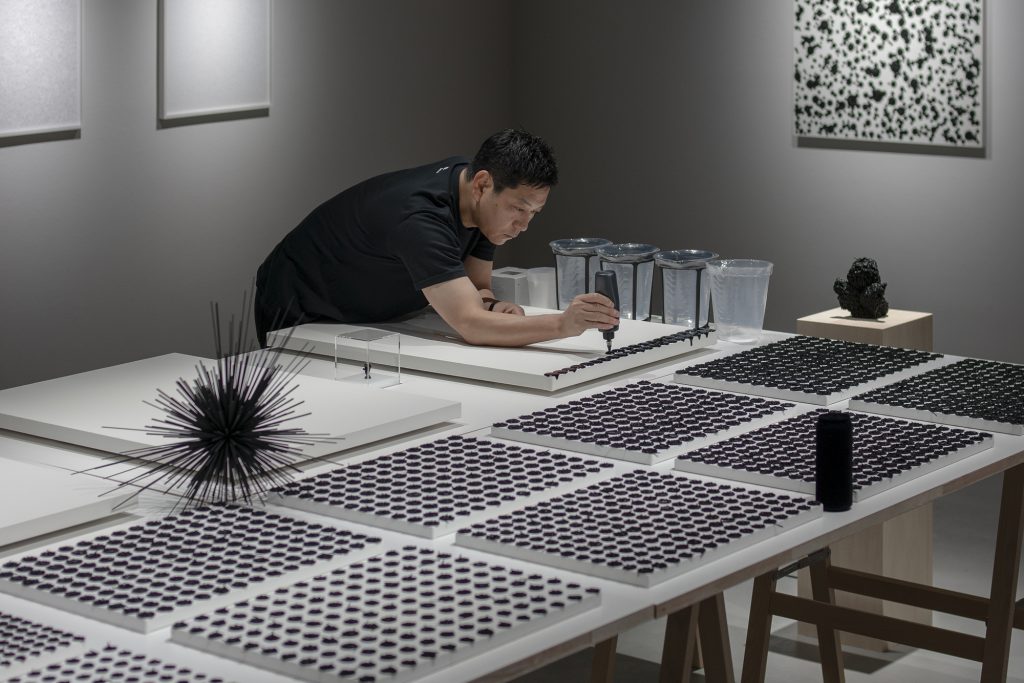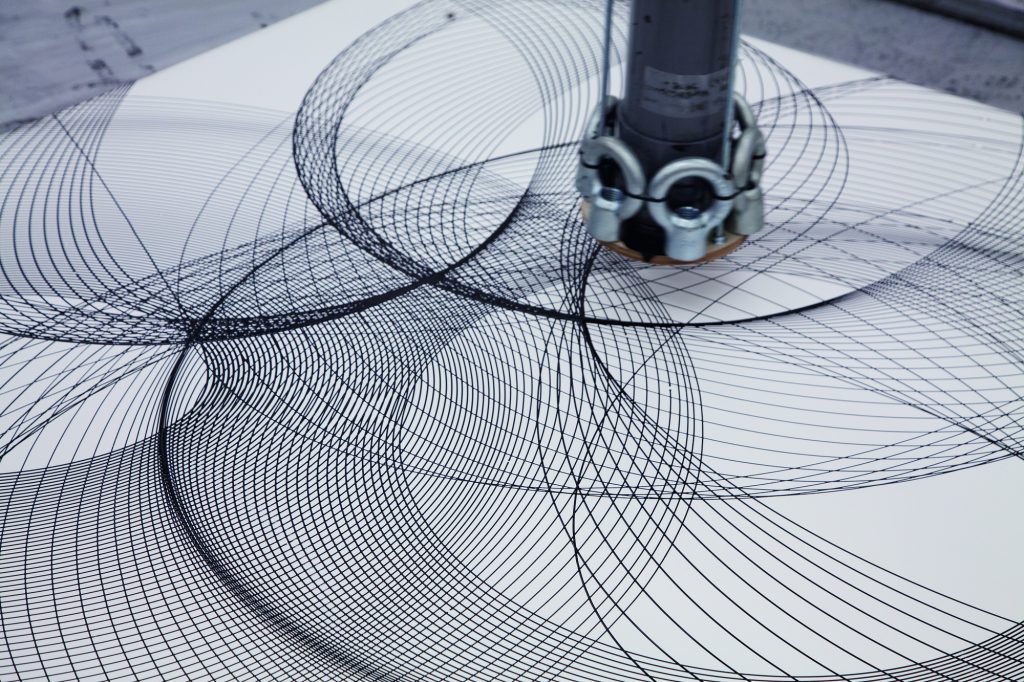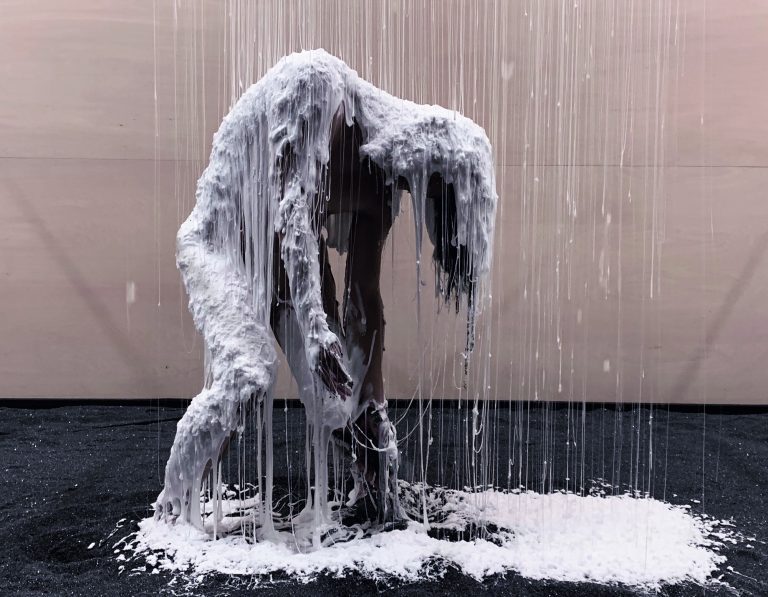

Kohei Nawa, a visionary contemporary artist, mesmerises audiences with his unique approach to material and perception. Known for his groundbreaking work, Nawa expertly combines traditional artistry with cutting-edge technology, inviting viewers to explore the intricate interplay between life, matter and information through his art.
hube: Your PixCell series is renowned for its innovative use of materials, particularly the application of glass or acrylic beads. What inspired you to experiment with these materials, and how do they contribute to the conceptual aspects of your work?
Kohei Nawa: When I was in graduate school, I happened to cover an object with a transparent glass sphere while doing my research – that’s how this series started. It was the moment when this strange sense of distance between myself and the subject emerged, and I was drawn to it. First, I tried a tangerine and cabbage. My next try was a taxidermic sheep.
This transparent sphere material is multifaceted: it symbolises the way we interact with the world in the information age, the visual and tactile experience through sculpture, and the concept of the cell, which is one of the main concepts in my creation. In other words, it can be said to be a format that represents the relationship between life, matter, and information.
It was when the era of information innovation was established, and digital cameras, computers, and the Internet became commonly used. Just as a camera uses a lens to capture an object and transform it into a digital image – a photograph, PixCell transforms an object into a collection of countless images by directly covering it with a transparent sphere, a lens. As a result, the sculpture as material dissipates, and an immaterial vision of the sculpture emerges. In other words, the transparent sphere is an artificial imitation of the cells that make up the body of an organism. At the same time, through its effect as a lens, it deconstructs, diverges, and reconstructs the hazy image of the body.
So, my focus on the transparent sphere and the birth of PixCell was the moment when my concepts, ideas, and images at that time came together, and it was the beginning of a major development of my own work.

